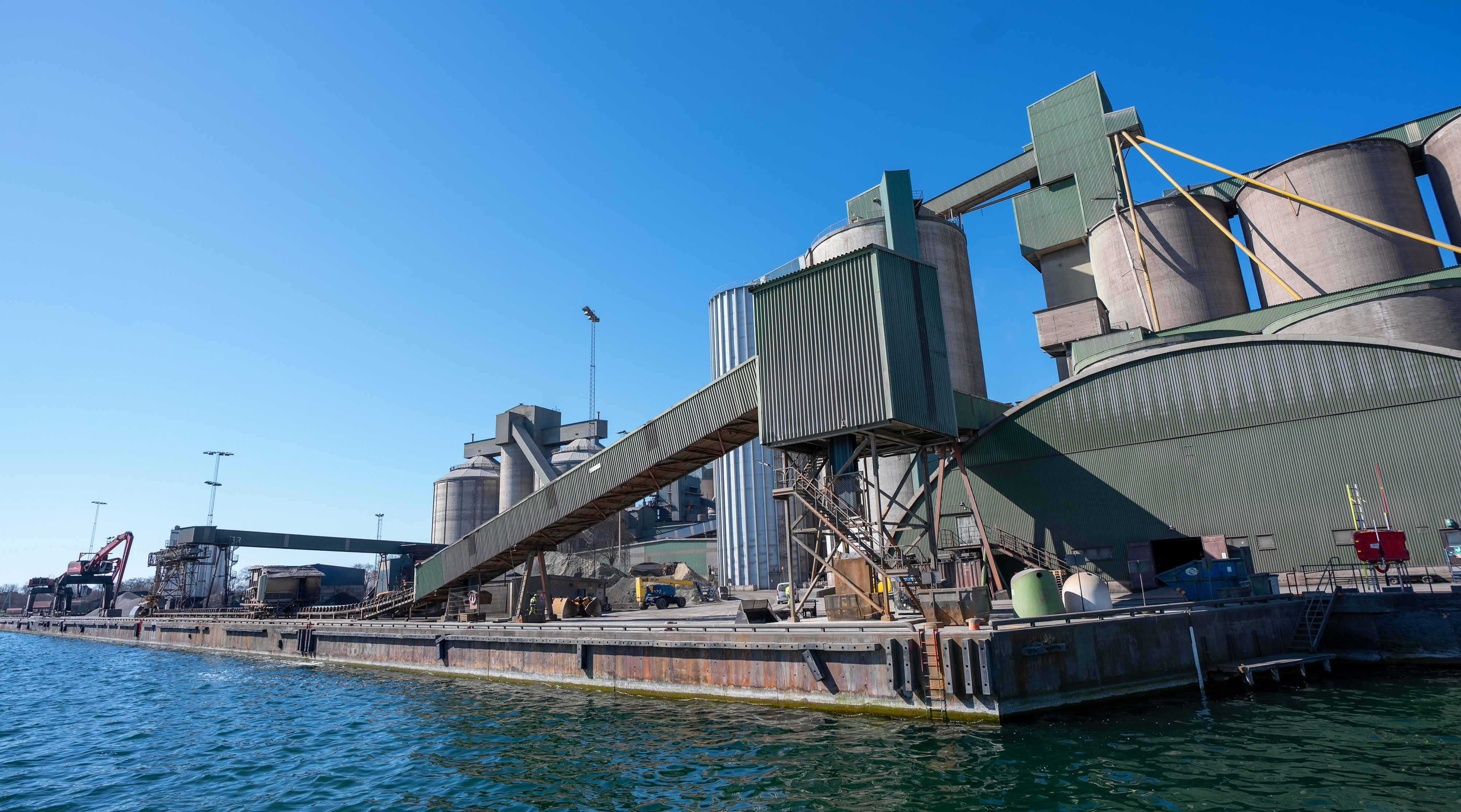Cementa and HeidelbergCement one step closer to establish a climate-positive cement plant in Sweden
HeidelbergCement, of which Cementa is a subsidiary, is now stepping up its activities with one of Sweden's largest climate transition initiatives. Today, the results of the pre-feasibility study for a CCS plant in Slite will be presented, as well as how the new grant from the Swedish Energy Agency will drive the coming steps towards a climate-positive cement production in Sweden in 2030.
When completed in 2030, the plant will capture and store up to 1.8 million tonnes of carbon dioxide annually, equivalent to 3% of the country's total emissions. As one of Sweden's largest green industrial transformation projects, the project on Gotland will be key to the Swedish construction sector's ability to achieve its climate transition.
In 2021, a feasibility study supported by Industriklivet was carried out where the organization has mapped out all the elements required to realise the CCS plant:
- The pre-feasibility study shows that a CCS plant in Slite has the potential to become climate positive. As a growing share of biofuels is used in production, the plant will capture and store more carbon dioxide than it emits.
- Implementation will involve a significant rebuilding and extension to the plant - a process that is starting now to meet the schedule.
- The amine technology used in Norway is the preferred option also in Slite.
- Electricity demand will increase significantly.
- The potential to put together the whole value chain from carbon capture to geological storage under the seabed is good. Alongside the established Northern Lights concept in Norway, further initiatives are being taken in the North Sea region to establish such infrastructure.
"The feasibility study shows that CCS is fully feasible in Slite. Together with the experience from the project in Norway, we now have a clear picture of how to proceed in Sweden. The Nordic countries have what it takes to lead the climate transition in the construction sector," says Giv Brantenberg, General Manager HeidelbergCement Northern Europe.
Today, HeidelbergCement is building the first CCS plant within the cement industry in Brevik, Norway, in cooperation with the Norwegian government. A pioneering effort that clearly brings practical challenges to the surface but also demonstrates the feasibility of the entire CCS value chain. The plant will be commissioned in 2024 and will also form the basis for a scaled-up initiative in Sweden.
With the help of a grant of SEK 51 million from the Swedish Energy Agency, Cementa is now starting the feasibility study, which represents an investment of SEK 124 million. This includes defining more specifically how the plant will be built, starting the environmental permit process and working to secure the electricity supply.
Energy supply is currently the most critical factor in establishing the plant. Efforts to upgrade the electricity grid to and on Gotland must be accelerated immediately.
"By 2030, we should be able to build with climate-positive concrete in Sweden. We can achieve this if we succeed in cutting carbon dioxide emissions from cement production, and the method for achieving this on a large scale is CCS. The Swedish construction sector is demonstrating that the demand is there, and we are ready. I now look forward to a constructive collaboration with all stakeholders involved, mainly around permitting processes and grid reinforcement, so that Sweden can continue to be a pioneer in industrial transformation," says Karin Comstedt Webb, Senior Vice President HeidelbergCement Sweden.


